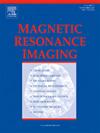RCLM-net:基于富俱乐部属性的轻型深度神经网络,用于多模态序列脊柱MR图像分割。
IF 2
4区 医学
Q2 RADIOLOGY, NUCLEAR MEDICINE & MEDICAL IMAGING
引用次数: 0
摘要
脊柱疾病的诊断依赖于多模态序列MR图像的综合评估。作为智能辅助诊断的基础,设计一种高效的MR图像分割模型至关重要。然而,以往的多模态图像模型往往有大量的参数,不适合低计算能力的应用场景,特别是基层医疗现场。为解决上述问题,本研究受脑功能网络“Rich-Club”特性的启发,构建了一种用于多模态序列脊柱MR图像分割的轻量级神经网络模型,命名为RCLW-Net (Rich-Club lightweight Net)。具体来说,我们的网络通过构造一个满足Rich-Club属性的紧凑网络结构,并结合递归残差卷积作为基本卷积模块,有效地减少了模型参数的数量。通过对包含200例患者数据的三模态序列MR脊柱图像进行五重交叉验证,RCLW-Net的参数尺度仅为经典Unet++的11 %,但分割性能更好。此外,所提出的RCLW-Net可以成功部署在轻量级嵌入式设备Jetson Nano B01上。RCLW-Net的低参数数量和高性能显示了其在低计算能力场景下的应用潜力。本文章由计算机程序翻译,如有差异,请以英文原文为准。
RCLM-net: A rich-club properties based lightweight deep neural network for multimodal sequence spine MR images segmentation
The diagnosis of spinal diseases relies on the comprehensive assessment of multimodal sequence MR images. As a prior foundation for intelligent aid diagnosis, it is important to design an efficient MR image segmentation model. However, previous models for multimodal images tend to have a large number of parameters, which is not suitable for low-computing-power application scenarios, especially for primary medical sites. To address the above problem, this study constructs a lightweight neural network model for multimodal sequence spine MR images segmentation, named RCLW-Net (Rich-Club Lightweight Net), which is inspired by the “Rich-Club” properties of brain functional networks. Specifically, our network effectively reduced the number of model parameters by constructing a compact network structure that satisfies the Rich-Club properties and combining the Recurrent residual Convolution as the base convolution module. Verified by the five-fold cross validation of the three-modal sequence MR spine images containing 200 patients' data, proposed RCLW-Net has only 11 % of the parameter scale of the classical Unet++, but the segmentation performance is better. Moreover, proposed RCLW-Net can be successfully deployed on a lightweight embedded device Jetson Nano B01. The low number of parameters and the high performance of the RCLW-Net show the potential of the application in low-computing power scenarios.
求助全文
通过发布文献求助,成功后即可免费获取论文全文。
去求助
来源期刊

Magnetic resonance imaging
医学-核医学
CiteScore
4.70
自引率
4.00%
发文量
194
审稿时长
83 days
期刊介绍:
Magnetic Resonance Imaging (MRI) is the first international multidisciplinary journal encompassing physical, life, and clinical science investigations as they relate to the development and use of magnetic resonance imaging. MRI is dedicated to both basic research, technological innovation and applications, providing a single forum for communication among radiologists, physicists, chemists, biochemists, biologists, engineers, internists, pathologists, physiologists, computer scientists, and mathematicians.
 求助内容:
求助内容: 应助结果提醒方式:
应助结果提醒方式:


